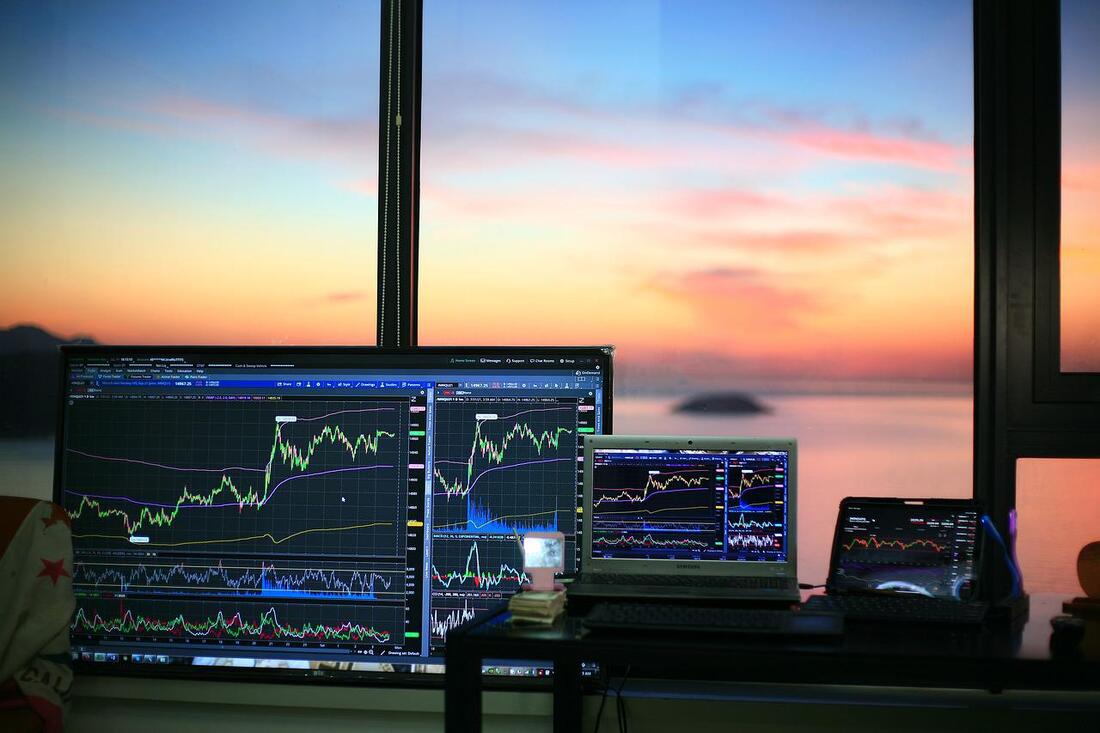
Before proceeding further, the inspiration for this article is what the Oracle from Omaha has been up to. That is, the continued and aggressive deployment of the massive cash pile on Berkshire’s balance sheet as the markets continue to sell off.
Berkshire has been deploying cash at an aggressive pace this year. Cash on hand has gone down by over $40bn from the beginning off the year, to around $106.3bn in March, and it seems the business has continued on its trajectory. So, what has Warren been buying? Nothing new, adding to existing outsized positions in Occidental Petroleum (OXY.NYSE), Chevron (CVX.NYSE), HP (HPQ.NYSE), Citigroup (C.NYSE), Apple (APPL.NASDAQ) and Ally Financial (ALLY.NYSE). So does this mean it’s time to forget that confusion and jump in? Certainly not if your premise is investing because arguably the greatest investor alive is doing so. Berkshire has also exited its position in Wells Fargo (WFC.NYSE) which also tells us that even the greatest of investors is not infallible. Moreover, one must also remember that Berkshire is in the insurance business and their time horizon and rate of return requirements are quite different from you or I as a result. So, what should we look to and where should we look?
The first thing to remember is this: buy for the right reason. That reason is simple, once the valuation of an underlying security fits your requirements as an investor. A selloff is simply an opportunity to buy at a more lucrative price. Whatever the market conditions may be, if your investment thesis is simply wrong then there is no better time to sell than now (hence the sale of Wells Fargo). Our greatest frustration with a bear market is not that returns are negative, only that we don’t have the opportunity to buy more at a given price. It is unfortunate perhaps that investors have the curse of liquidity, which tends to exacerbate the Keynesian animal spirits in either direction. After all, we don’t buy a residential property and promptly go on to the street in order to ask every passer-by what they might pay for that particular asset and make decisions in the space of a moment.
Using more localised examples, take the case of businesses like Zip (ZIP.ASX) or Pointsbet (PBH.ASX, which we owned way back in the ancient times of 2020). What about these businesses changed over a time frame of two years that saw them reach dizzying double digit price heights and promptly fall from their peaks by 90% and 81% respectively? This aspect is perhaps what Keynes referred to when he saw equity markets as a game of musical chairs (for no intrinsic value add to the overall economic welfare) and, while we do disagree with the notion, market gyrations without a more balanced understanding sometimes make it seem otherwise.
We are by no means suggesting that we are or aren’t in a bubble or that recent price action has been irrational. Let’s try to understand what has happened to date, from there we can then formulate a view of where this may lead.
Context
At this point we are all tired of reading about central bank policy and its impact on the market. With that in mind, we’ll aim to keep things rather simple and go back to basics. First, what the stock or price of any given security represents? It can be categorised as two things: 1) the actual value of the business or asset today; and 2) what the market expects for the future of the business. Also worth remembering is that the market price is only as good as what the last marginal investor bought their share of the business for (keeping ourselves to equities), it is not the total value of the transactions or even the amount of money that changed hands. This is why stimulus checks, which bought retail punters with a preference for a more adventurous return, created some ridiculous price action. With that return to the basics, how does a central bank actually impact this? Quite simply, liquidity and valuation.
Remembering the second factor that affects the price of a security, that the future value of the business (ultimately in the form of earnings) has to be accounted for today, we need to use a discount rate. The most obvious mechanism for this is the rate of return of cash on hand today. The lower this is, the higher the price you pay today. Aside from this mechanism, the second form is liquidity. Oversimplifying again, QE injects money into the system which allows that marginal investor to pay an ever higher price. Reverse this and the result follows, you are essentially taking away liquidity or at very least lowering the price the marginal investor is willing to pay. So yes, a reversal of central bank policy can be a fundamental shift, taking away the marginal dollar and investor. To what extent though?
That depends on the change in policy. The S&P multiple under Volcker, who had the gumption to hike the economy into recession, was around 8x earnings. Today it stands at 17.6x forward earnings. In Australia it stands at a similar 17.5x. At face value, the possibility that there is more pain to come looks likely. If you take this view then, yes, the markets are not attractive. Hold on a moment though, we posit a different argument.
Despite similarities (the 70s and 80s did have similar supply shocks), things are very different now to four or five decades ago. We are facing wage pressures but this comes after more then two decades of stagnation and, while it does become a potential headwind for corporate profitability, it does create a stronger consumer which should feed into top line growth. Second, despite Powell seemingly espousing a desire to emulate Volcker Stateside, he may have forgotten that the latter effectively ruled out the possibility of similar policy shifts given an aging demographic, which also creates immense buying pressure and liquidity for investible securities (i.e. all things equal, an effective higher multiple for longer) and a natural moderation in inflation. On the latter point, think about the age bracket for the highest expenditure (i.e. mid to late 30s/young families).
While the US may have some more flexibility given that their debt profile skews toward public in nature, we remain highly cynical that there is the political wherewithal to hike the economy into a recession (the independence of central banks will start to unravel rather quickly). Looking to Australia, there is much less wiggle room. Household debt to GDP has now ballooned to a staggering 120% of GDP, much of which has been a more than buoyant property sector. Assuming sanity prevails, we similarly doubt that policy makers fixated on inflation inadvertently cause a depression.
What does this mean?
Don’t place too great a focus on earnings multiples based on history. The policy shift is not, given current constraints, likely to be as drastic as people expect (although the days of easy money and an effective central bank put are long gone). Despite a significant and (importantly) indiscriminate buyer leaving the market, of the reasons listed above the most important is demographics, there is a longer-term bid. If one does expect the left-field 70s repeat, remember that cash wasn’t a particularly great store of wealth. There was effectively nowhere to hide aside from select agricultural and real assets. Moreover, while the market multiple may shrink, keep the first category, i.e. earnings, in mind. Company earnings are the best hedges against inflation, assuming that they have pricing power.
This brings us to the original issue, is there reason to be fearful? Potentially, yes. But has the market ever been otherwise? No. It is our view that it is precisely these environments that create the most opportunities. It is a more reasonable bet to buy investments with a thesis that holds (assuming one is cognizant of their rate of return and valuation) than to effectively time the market. The marginal investor willing to sell at a bargain is a discerning investors gain. The bargain not being fixed but only compared with an individual investor’s valuation.
Is it better to wait?
It might be. It might not be. Despite humanity’s best efforts to make it otherwise, the world has always been messy. Left field events exist and if they were easy to predict then they wouldn’t be left field events. To name a couple, we currently have a war in Europe wreaking havoc on energy markets and an pandemic still causing supply chain issues years in.
Returning to the Buffett story, the stocks being bought were existing holdings. They obviously have an investment thesis that still holds and we would assume that there was a price the Berkshire team had in mind when making the original decision; they obviously have a higher price at which they are comfortable buying and they continue to buy at a lower price. An investor can only work on a balance of probabilities based on reason. Too often we find that there is an endeavour to create a neat certainty and ascertain all potential outcomes; a tendency that ultimately begets pain via FOMO or actually missing out.
It pays to keep things simple. Two questions are fundamental: what is your expected rate of return? What is the risk you are willing to take on? We are talking about volatility here not market risk, which is the potential for something to go to zero. If there is a potential for the latter, perhaps best a road better not travelled. All volatility, or a sell off, represents then is an opportunity. Ironically, it is quite a lot more productive to be fearful in a bull market than a bear market, in the former there is a lot more to lose than the latter.
Where to next?
With all that said, we can only say that we understand the reason and nature of the recent price action. We also can reasonably say that there are secular forces at play that should prevent another GFC or a depression like scenario. On the flip side it is also just as true to say that the unprecedented level of central bank largesse (driving immensely easy returns) is now at an end, nothing is forever after all. We remain of the conviction that equities are still the best possible asset class to be exposed to, one just has to be a little more discerning than in the past. Three important metrics to consider are:
- Pricing Power – Allows the business to keep ahead of, or even with, inflation;
- Revenue Stickiness & Visibility – Typically this is associated with technology companies but it can be applied across the board. There are even consumer discretionary players that have almost cult like following, like Nike. It can also come in the form of healthcare or biotech players that are protected by regulatory practices (i.e. patents).
- Debt on Balance Sheet – It doesn’t have to be low levels, fixed rate debt with long duration is effectively a transfer of wealth from the debt holder to the equity holder. Think about global businesses such as say Siemens (SIE.ETR, issued negative yielding) or Berkshire.
Look to those metrics when buying, the current environment has made a lot of companies even more attractive. It is a rather futile endeavour to consider whether they might get cheaper, they’re attractive now and unless you genuinely have divine attributes that enable you to see into the future then you won’t pick the bottom!
One also wonders at the hubris of our kind, who somehow believe themselves to be the exclusive consumers of information or understanding changing contexts. As though management teams or employees of our holdings are not also trying to navigate the exact same circumstances? Be it inflation or the potential for a central bank policy error or any number of variables. We are willing to concede that a CEO of Woodside (WPL.ASX) or ExxonMobil (XOM.NYSE) might have a better understanding of the future of energy markets than us and make decisions accordingly or that the management of CBA might have a reasonable understanding of RBA policy or inflation. Assuming we pick stocks with reasonable management teams, we know where we would rather park our capital.
We shall conclude with one of the more memorable quotes in investing. Baron Rothschild once boldly stated, “Buy when there’s blood in the streets”. It is curious that the second half of the quote is so often overlooked: “even if the blood is your own.”
Keep it simple. Keep it disciplined. Keep it rational.


